Published Sep 17, 2017
Behind the Scenes: Discovery Props & Prosthetics
Behind the Scenes: Discovery Props & Prosthetics
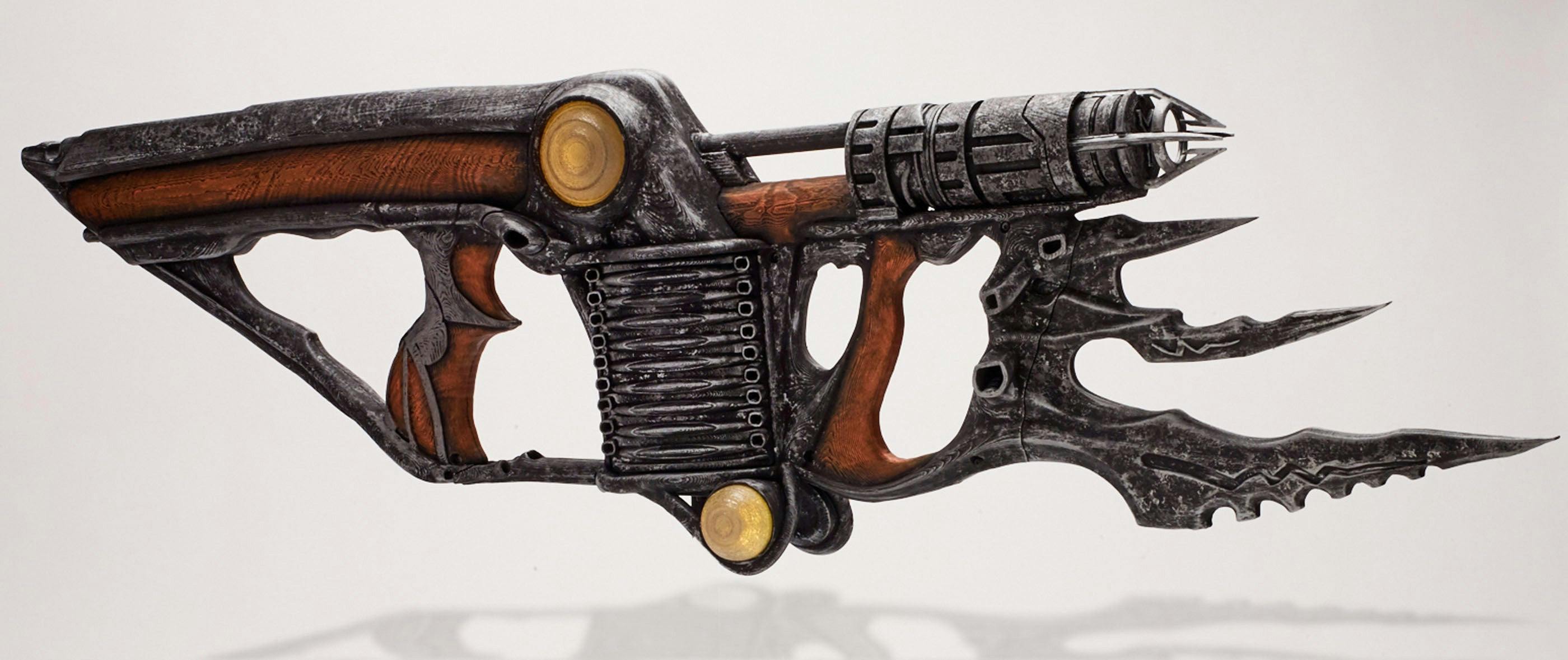
StarTrek.com’s recent visit to the set of Star Trek: Discovery in Toronto included not only a behind-the-scenes look at the actual sets, but also peeks at the props and prosthetics. Our guide for the day, executive producer and co-showrunner Aaron Harberts introduced James MacKinnon, Department Head Prosthetics, and Hugo Villasenor, Key Prosthetics, as well as Sang Maier, Props Buyer, who displayed their respective wares and took us through what they are and how they were crafted.
“We could not do this show with their departments,” Harberts began. “They add so much to what we're doing and like, I said, these aren't crew members. These are artists who just happen to ply their trade by putting their art on camera. And we really, really, appreciate them."
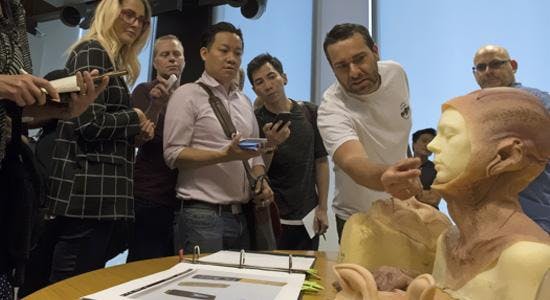
MacKinnon showed several Discovery makeups, including Saru, played by Doug Jones. It's a five-piece prosthetic that includes a cowl, a face piece, a chin piece and an upper lip. It takes approximately two hours to apply. Interestingly, it’s made of silicone, not latex. “We still use latex quite a bit,” MacKinnon explained. “But technology has changed since the original Star Trek shows, and I've been lucky enough to work on Deep Space Nine and Voyager, First Contact. I'm in my late forties, so I've been around a little while. Foam latex was around back then. Silicone was not around at that time. Silicone is our new product that we use because instead of it being opaque and we're painting the color on with paint, intrinsically, the color is in there, so we're doing washes on top instead of a full paint job."
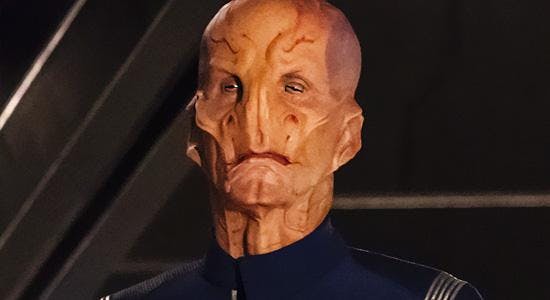
Yes, if you’re wondering, Jones gets a new Saru face every time. “Just for the quality of the show,” MacKinnon noted, “since it's such a big show, each time we use this, this goes in the garbage. We potentially could use it twice, but there's no reason to lessen the quality.”

All of the prosthetics are designed and built in California at Alchemy Effects, with Glenn Hetrick and Neville Page as the designer. One early surprise? Jones’s nose was completely covered, so they ended up having to figure out how to get him to be able to breathe, not just through his mouth because then he’d sound very nasally. “We ended up scrubbing out a piece from his nose up to his breathing hole on the prosthetic,” MacKinnon said. “So, now he can not be a mouth breather. He's more comfortable through the day. They get the voice that they want from him and a little less ADR probably.”
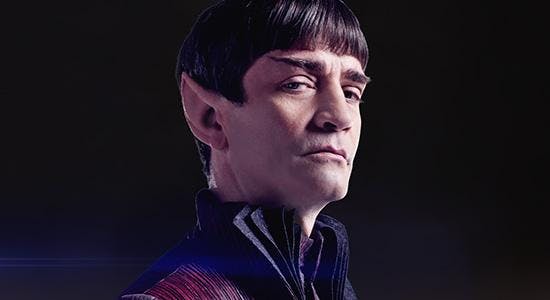
Next up were Sarek ears. Oddly enough, MacKinnon acknowledged, James Frain’s makeup takes just as long as Jones’s. “So, with James we do ears,” he explained, “and eyebrow blockers. We block out his eyebrows and then we do lace extensions to bring them up. Even though this is very detailed, that just takes just as long to do this makeup. He's in the chair about an hour and 45 minutes to 2 hours, but that's jumping back from regular makeup to hair and then back to us.”
Airiam
MacKinnon then invited Villasenor to talk about the makeup/prosthetics for a character named Airiam, as he’s the artist responsible for her look. It’s an exotic-looking prosthetic, which makes sense since the character is a robot. He described the prosthetic as “almost like a jigsaw puzzle,” with assorted pieces, a helmet, contact lenses and more. Airiam, who works on the Discovery bridge and will usually be seen off to Lorca’s side, needs to look smooth on the screen and that may be accomplished on occasion with complementary CGI.
Oscnullus
Next, we were introduced to another character, Oscnullus, who’ll be one of a couple alien characters views will see in the mess hall, walking down the corridors, etc.
“We had a dinner on Saturday, meeting some cast members, and this beautiful blonde woman comes up and she says, ‘Hi, I'm Sara!’” Harberts recalled. “And I say, ‘Hi, I'm Aaron. It's nice to meet you.’ She goes, ‘I'm Airiam.’ I had no idea. It was one of those moments, just like, ‘What?’ It was like meeting the long-lost friend you didn't know was your friend. Anyway, the transformation is pretty incredible.”
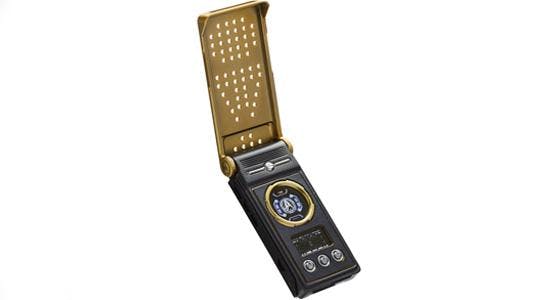
Harberts then passed the torch to Maier, who looked like a kid in a candy shop as he showed off all the items on the props table. We’re talking communicators, bat’leths, phasers, pulse rifles, badges, knives and more. Most of the props, he noted, “especially the iconic ones,” took a long time to develop. He cited the communicator as “a good example of where we wanted a certain design language.” The inspiration was the TOS communicator,” and at one point it had an actual phone inside, though it has a Nano.
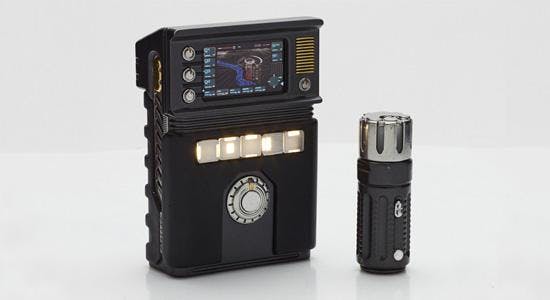
“The tricorder is another classic prop that we've made,” Maier said, “and we wanted to do the two-handed one.” It lights up, has a hand scanner and is updated a bit, though “it also has the same significant color scheme, the gun metal with the buttons that are chrome and brass.”
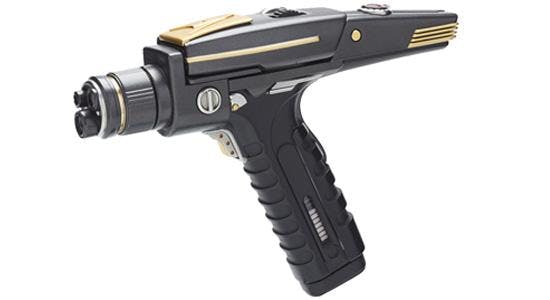
Then it was on to a phaser, delta shields, etc. Pretty much everything you’ll see on the Shenzhou and Discovery boasts a metallic look. That’s meant to secure a unity sort of design, a common language across everything from the props to the bridge to the uniforms. “It was all really a holistic approach that the set reflects, the costumes reflect, the props and everything else,” Maier stressed. “That color palette, that color language, is basically throughout the whole show. They want us to stay consistent, which obviously takes, when we were prepping, a lot of planning. Some things don't come out of thin air. You really do have to plan accordingly and stick with your guns as well to pull through that.”
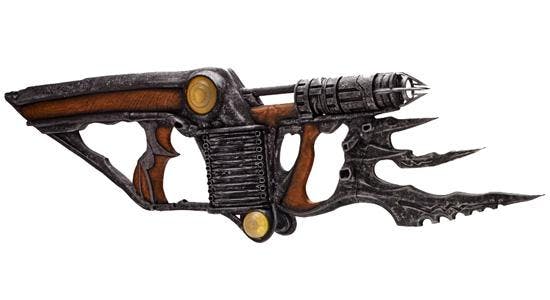
Many of the Klingon props, Maier said, are framed in aluminum, with the detailing molded on top. Rubber versions are used in fight scenes, “and you can’t tell them apart.” There’s even a Klingon torture device that’s appropriately gruesome. Also pretty cool, a Tellarite bazooka, a Vulcan staff and Harry Mudd’s gun, the last of which is based on a revolver and feels a bit art deco.

